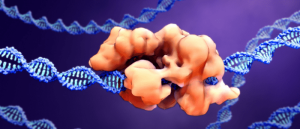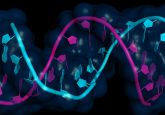Avoiding an apocalypse: Repair-seq maps the next mutation for gene-editing technologies

Please consult with researchers at Princeton University (NJ, USA) before you reach for your subterranean mansion laboratory plans; their recent project to map cell–pathway interactions in gene-editing could help to lower the potential for unwanted mutations.
As an emergent field, gene editing gets an often nightmarish portrayal in popular culture. As with any new advancement, speculation abounds on all the ways something might go apocalyptically wrong. Unfortunately for would-be gene-editing apocalypse maestros, a team of researchers led by Jeff Hussmann at Princeton University, may have made significant steps towards lowering the apocalyptic probability.
To alter a sequence of DNA you need to break it first. As anybody who has ever tried their hand at not creating an undead/mutant apocalypse in their basement knows: fixing something is always a great deal more work than breaking it is. So it is that cells utilise numerous mechanisms involving specific sets of genes working on specific pathways, in order to repair DNA. “But,” senior author Britt Adamson (Princeton University) acknowledges, “those processes are incredibly complex and thus often difficult to untangle.”
Repair-seq allows researchers to profile the way in which individual genes affect mutations created at damaged sites. Using this data, researchers can generate DNA repair models and study the ways in which those mechanisms impact genome editing. Applying this method to CRISPR-Cas9, the team, working at the Lab of Jonathan Weissman, Massachusetts Institute of Technology (MA, USA), analyzed a vast quantity of Repair-seq experiment data in order to map the links between Cas9-induced mutations and DNA repair pathways. They have, generously, made this data available online.
Scientists have been able to modify CRISPR’s basic architecture to extend its editorial reach to the epigenome, developing a new tool called ‘CRISPRoff’.
A separate team operating under David Liu, at the Broad Institute of MIT and Harvard (MA, USA), developed a genome-editing system that doesn’t necessitate double-strand breaks. Their system, ‘prime editing’ is used across a broad range of cells and sites; in order to improve the system’s efficacy, they collaborated with Adamson and Hussmann to explore the potential to assist prime editing using Repair-seq.
They found that the ability to achieve desired edits was affected by proteins in the DNA mismatch repair pathway. By inhibiting or evading that pathway, they demonstrated that they could enhance the efficiency and accuracy of the outcomes.
Adamson explained, “we see Repair-seq as a tool that allows you to take a detailed picture of what genome editors are doing inside cells and then very quickly assess, ‘Is this a landscape in which I can find design principles that will help improve the tool?’”
The work highlights the potential for Repair-seq to improve other genome-editing technologies. They have already applied it to another genome-editing system developed under Liu, with results from that study published in Nature Biotechnology. The potential for gene editing to impact research is profound, with significant implications for treating diseases. By unpacking the detailed and complex processes involved in genome editing, the potential ability to minimise the frequency of unwanted mutations or the complete lack of impact, holds considerable prospects for the future of gene-editing technology. Can somebody notify the Umbrella Corporation, please?






